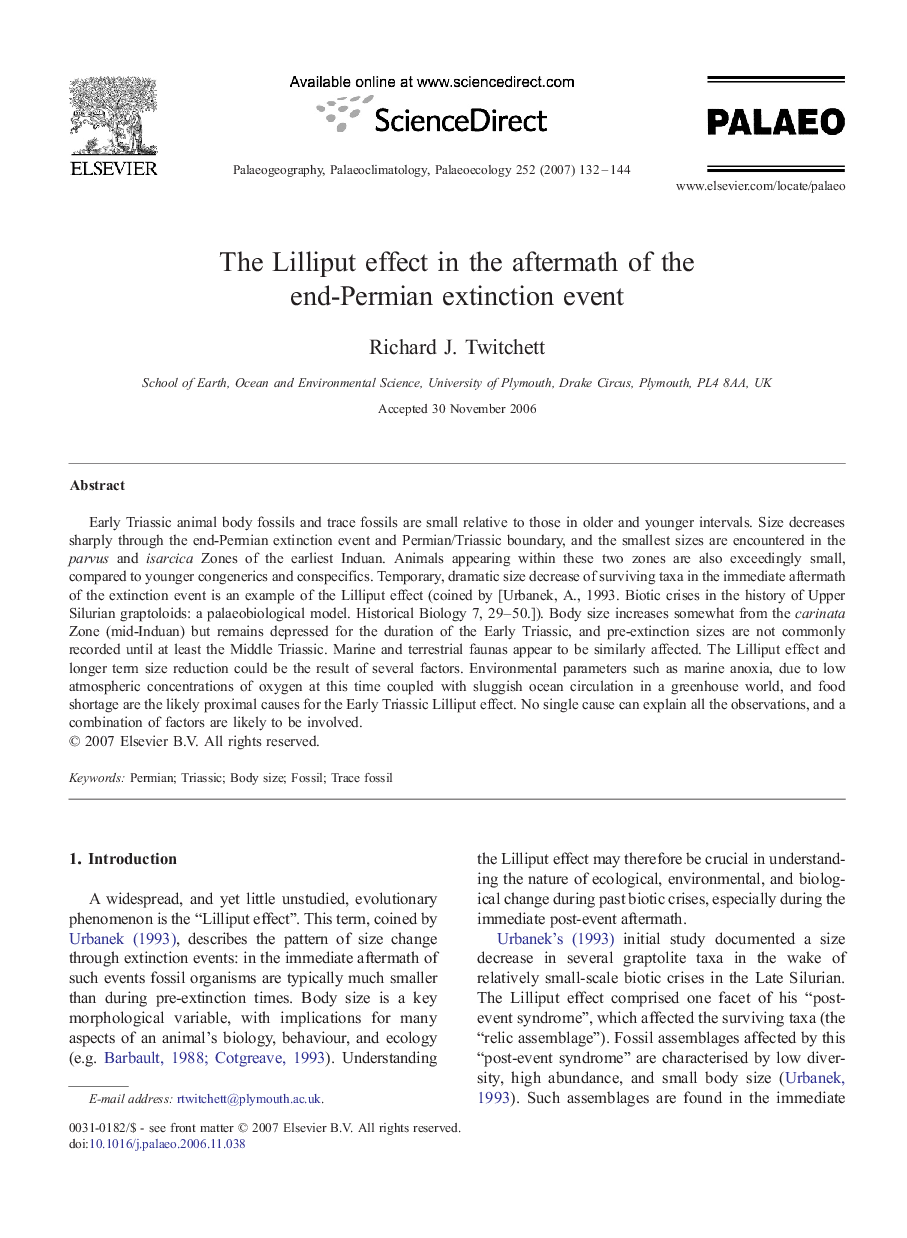| کد مقاله | کد نشریه | سال انتشار | مقاله انگلیسی | نسخه تمام متن |
|---|---|---|---|---|
| 4468819 | 1622347 | 2007 | 13 صفحه PDF | دانلود رایگان |

Early Triassic animal body fossils and trace fossils are small relative to those in older and younger intervals. Size decreases sharply through the end-Permian extinction event and Permian/Triassic boundary, and the smallest sizes are encountered in the parvus and isarcica Zones of the earliest Induan. Animals appearing within these two zones are also exceedingly small, compared to younger congenerics and conspecifics. Temporary, dramatic size decrease of surviving taxa in the immediate aftermath of the extinction event is an example of the Lilliput effect (coined by [Urbanek, A., 1993. Biotic crises in the history of Upper Silurian graptoloids: a palaeobiological model. Historical Biology 7, 29–50.]). Body size increases somewhat from the carinata Zone (mid-Induan) but remains depressed for the duration of the Early Triassic, and pre-extinction sizes are not commonly recorded until at least the Middle Triassic. Marine and terrestrial faunas appear to be similarly affected. The Lilliput effect and longer term size reduction could be the result of several factors. Environmental parameters such as marine anoxia, due to low atmospheric concentrations of oxygen at this time coupled with sluggish ocean circulation in a greenhouse world, and food shortage are the likely proximal causes for the Early Triassic Lilliput effect. No single cause can explain all the observations, and a combination of factors are likely to be involved.
Journal: Palaeogeography, Palaeoclimatology, Palaeoecology - Volume 252, Issues 1–2, 20 August 2007, Pages 132–144